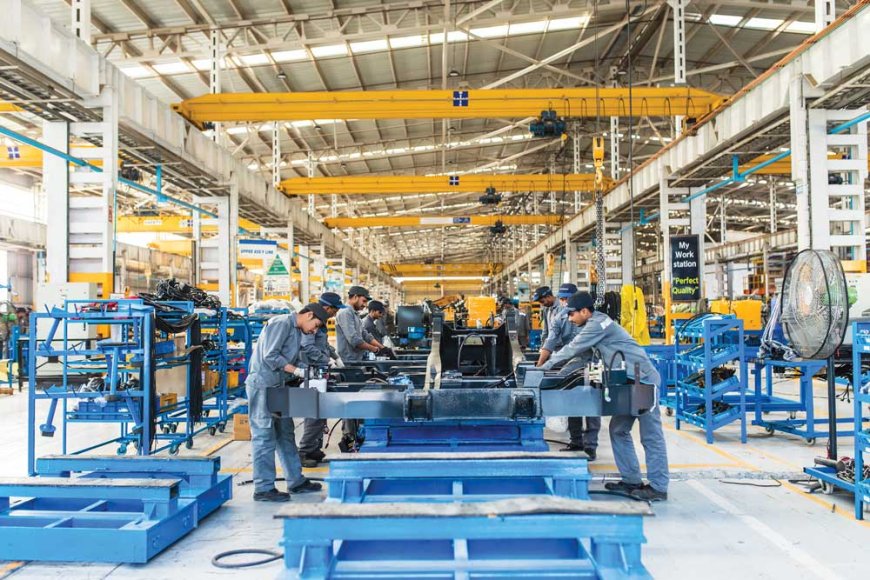Customer expectation is changing now and they need more sophisticated product which can fulfil heavy duty demand at site.
Sung Hyuk Lee General Manager – Operations, Hyundai CE India What do you think are the latest ‘smart technology trends in the manufacturing sector, especially in the manufacturing of construction and mining equipment

What do you think are the latest ‘smart technology trends in the manufacturing sector, especially in the manufacturing of construction and mining equipment and what do you think is the impact of this on the manufacturing processes, enterprise value chain and supply chain?
Smart technologies which are pretty common in automobile industry now getting popular in manufacturing sector as well. The ultimate aim is to provide quality product for customers within our cost expectation and timeline. Customer expectation from product is also changing now, now they need more sophisticated product which can fulfil heavy duty demand at site. This requires high level of automation and usage of smart technologies in manufacturing plant as well.
If we talk about Hyundai, we are using latest smart technology which includes the use of IOT (Internet of Things) devices, advance robotics, AI based system, augmented reality and virtual reality in manufacturing. To explain more in detail, currently we are using 2 assembly line smart technologies such as
Hi -Viss System: For real time inventory transition of materials as well as control and monitoring being used in Warehouse , Tool room and CBU stock area
Assembly Line Automation
- Electric Torque tools for Operator Fatigue reduction, Accuracy in torque control, Data Collection in digital form.
- Smart Technology use for Training of Operators.
- Smartphone Technology is used for quick information, immediately sharing of problem & solutions to resolve the issues.
Can you elaborate on the manufacturing philosophy and production principles of your company?
HCEI is always trying to adopt new technologies and innovation to optimize production, reduce cost, improve product quality to meet customer’s requirement by reducing waste and removing non-value-adding activities. We adopt Lean Manufacturing concept such as TPM, 5S, KAIZEN, SPS, POKAYOKE which has improved our overall manufacturing efficiency significantly. We are also working to educate our vendors to adopt such processes to improve overall efficiency.
How do these principles help in ensuring ‘zero defects’, ‘environment-friendliness’ and ‘safety’ in your production processes and supply chain? Brief us on the on-going / on the pipeline initiatives to make your manufacturing more sustainable?
The real-time data and communication between people, machines, and systems provide a holistic view of production and empower frontline workers to make adjustments in real-time. So the defects can be turned zero. We have invested heavily on our training facility to improve require skillset and knowledge result in continuous Zero defect occurrence and sustainability. We are also using automated tool such as Torque Control Tool, battery tools to minimize human error as much as possible.
Safety in Industry 4.0 is not just about keeping people safe while operating machines. It’s about introducing new practices that guarantee the safe interaction of humans and machines.
The alarm system is one initiative for safetyWhich gives an alert to the operators regarding safety guidelines.
To what extent has your company imbibed digital technologies on manufacturing and how have you been able to leverage the digital platforms / flexible and scalable technology in your manufacturing set up?
Like I mentioned earlier, Digital technology is future even for Construction Equipment Industry. At Product level it’s already being used extensively and even for manufacturing processes its getting popular.
In manufacturing we are using digital technology such as automatic cutting processes, automatic and semi-automatic welding process such as Robot welding, Simulator as SPM for part fabrication and automatic machining tool presetter using to quickly determine tool geometry offset. we collecting in process inspection data in digital format which is further use for analysis and improvement of process and quality. We developed customised DPR software to monitor production efficiency and COPQ based online information from shop floor.
Addition to this, we are using PLM system gives accurate drawings for process analysis and material requirements and manufacturing process planner help to set the process for assembly of machine station wise manner.
What do you think are the major challenges in replacing the legacy system with newer any and smarter technologies?
It’s not easy to change any legacy because of financial and manpower behaviour point of view. Any new technology needs huge initial capital investment. We also need to invest on hiring of quality manpower and on training of existing manpower to adopt new technologies.
Hits: 37








